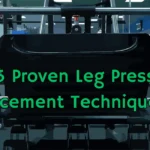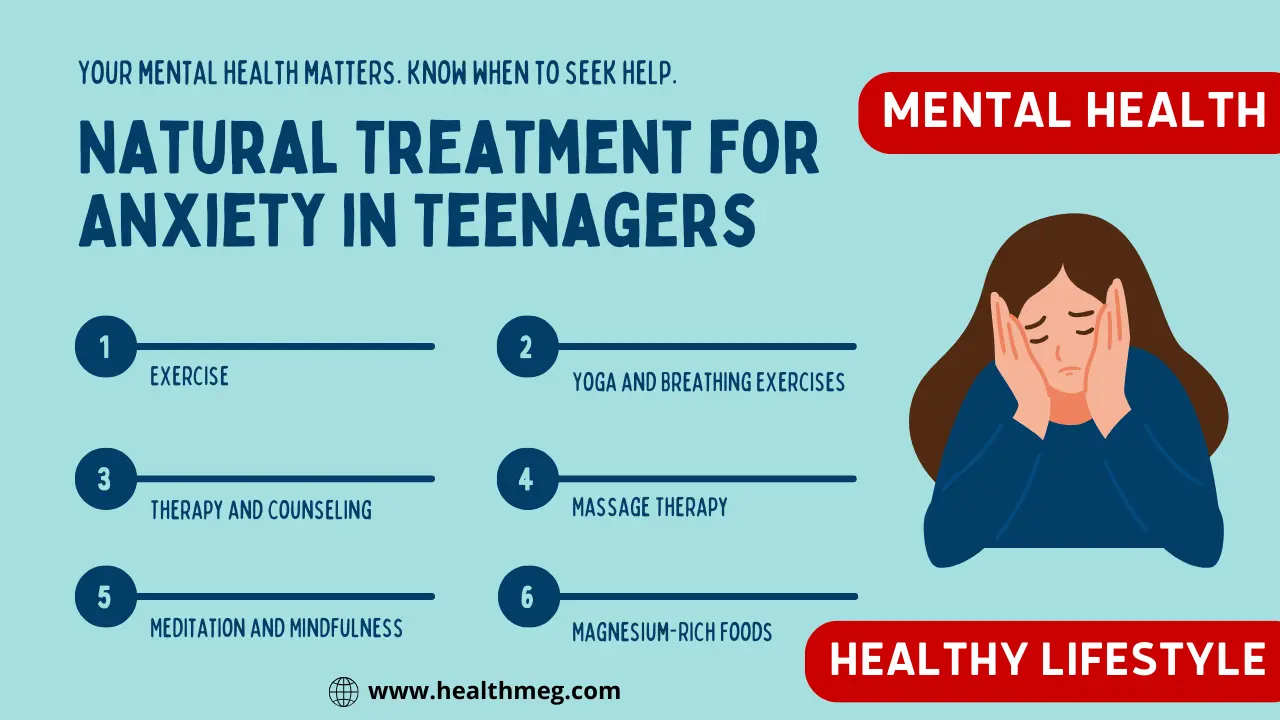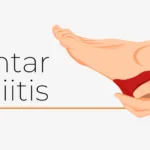If you’re dealing with the nagging pain and discomfort of biceps tendonitis, you know firsthand how much it can impact your daily life and activities. The inflammation in the biceps tendon in the front of your shoulder makes it painful to bend and straighten your elbow or lift your arm overhead.
While rest is important for reducing irritation during a flare-up, the right exercises can actually help strengthen the tendon and prevent future bouts of tendonitis. This guide will explain the 7 Best Biceps Tendonitis Exercises With a Picture and how these targeted exercises and stretches can aid your recovery and equip you with a comprehensive biceps tendonitis exercise program.
Do read the People Also Ask (FAQs) about this topic.
Understanding Biceps Tendonitis
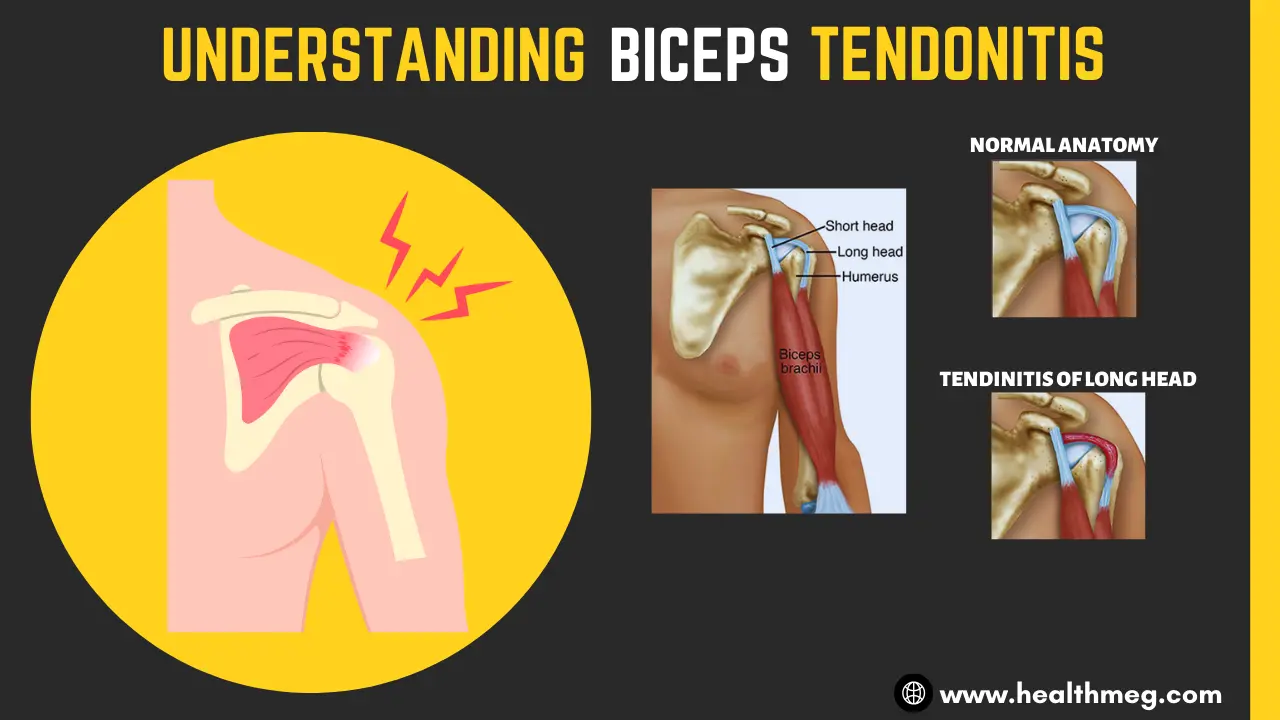
Your biceps muscle allows you to bend and rotate your arm. It runs from your shoulder blade through the front of your shoulder and elbow and connects to the radius bone in your forearm. This connection occurs via the biceps tendon, a fibrous cord that attaches muscle to bone.
Biceps tendonitis is inflammation of the biceps tendon, usually due to small tears or irritation from overuse. It often stems from:
- Sports requiring repetitive overhead arm motions like tennis, swimming, or baseball
- Lifting heavy objects
- Activities involving frequent bending and straightening of the elbow
- Direct trauma to the biceps tendon
- Anatomical abnormalities put stress on the tendon
Common symptoms of biceps tendonitis include:
- Pain and tenderness near the biceps tendon in front of the shoulder/elbow
- Pain that worsens with shoulder and elbow motion
- Stiffness, cramping or achiness in the biceps muscle
- Difficulty lifting objects or performing tasks requiring elbow flexion
If you experience severe, worsening pain, inability to bend your elbow, weakness in the arm/hand, swelling or redness near the elbow, or feel a popping or snapping sensation, see your doctor promptly. Prompt treatment can help prevent complications like tendon tears.
How Do Biceps Tendonitis Exercises Help?
Exercises that strengthen and gently stretch the biceps muscle and tendon can aid recovery in several ways:
- Improves flexibility and mobility: Gentle stretching helps restore the range of motion lost due to stiffness and keeps the tendon gliding smoothly.
- Increases blood flow: Exercise boosts circulation, bringing oxygen and nutrients to nourish the damaged tendon tissue.
- Promotes proper tendon alignment: Targeted motions can help realign tendon fibres to heal in the proper configuration.
- Develops muscle strength: Gently strengthening the biceps muscle helps take pressure off the tendon. You can check out these 16 exercises that start with E for muscle strength and Calorie Burn.
- Reduces scar tissue build-up: Controlled movement prevents adhesions and scar tissue from limiting mobility.
- Decreases inflammation: Exercise ramps up the production of anti-inflammatory compounds to calm flare-ups.
- Enhances proprioception: Moving the elbow joint helps improve position sense and control.
With your doctor’s okay, integrating rehabilitative biceps exercises into your treatment plan can expedite recovery. But take care not to overdo it too soon. Early on, painful activities will only aggravate the inflamed tendon.
7 Best Biceps Tendonitis Exercises With Picture
When performed properly, targeted exercises can help rehabilitate the biceps tendon and prevent future flare-ups. It’s important to start slowly with gentle stretching and range of motion movements before progressing to light strengthening exercises.
- Biceps Curls
- Biceps Stretch
- Sleeper Stretch
- Shoulder Flexion
- Internal Rotation Stretch
- External Rotation Stretch
- Forearm Supination and Pronation
1. Biceps Curls

Biceps curls are one of the most direct ways to strengthen the biceps muscle and tendon. This exercise should be avoided during acute inflammation, but can safely be integrated during recovery when pain starts to resolve.
How to do it:
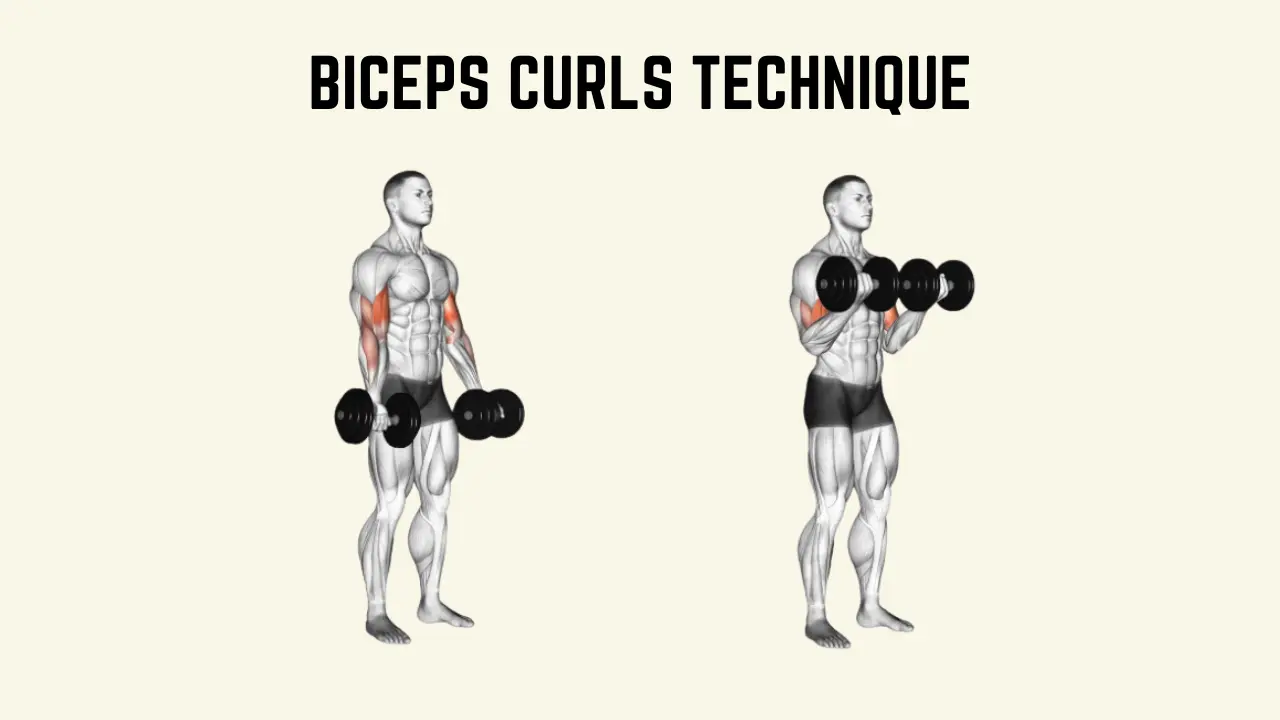
- Stand with knees slightly bent, posture upright, and core engaged. Keep your elbows close to your sides.
- Hold a light dumbbell in each hand with an underhand grip, palms facing forward.
- Slowly bend both elbows to curl the weight up towards your shoulders, then lower back down fully.
- Start with low weight – even 1-3 lb dumbbells. Progress very slowly, only increasing weight after mastering good form through a full pain-free range of motion.
- Complete 10-15 repetitions to start, for 2-3 sets.
Precautions:
- Keep elbows close to the body – avoid outward flaring.
- Maintain slow, controlled motions – no jerking or swinging the weights.
- Stop immediately if you feel shoulder or elbow pain.
- Monitor for post-exercise soreness that lasts >2 days, indicating overload.
- Ensure biceps curls do not replace stretching exercises.
2. Biceps Stretch
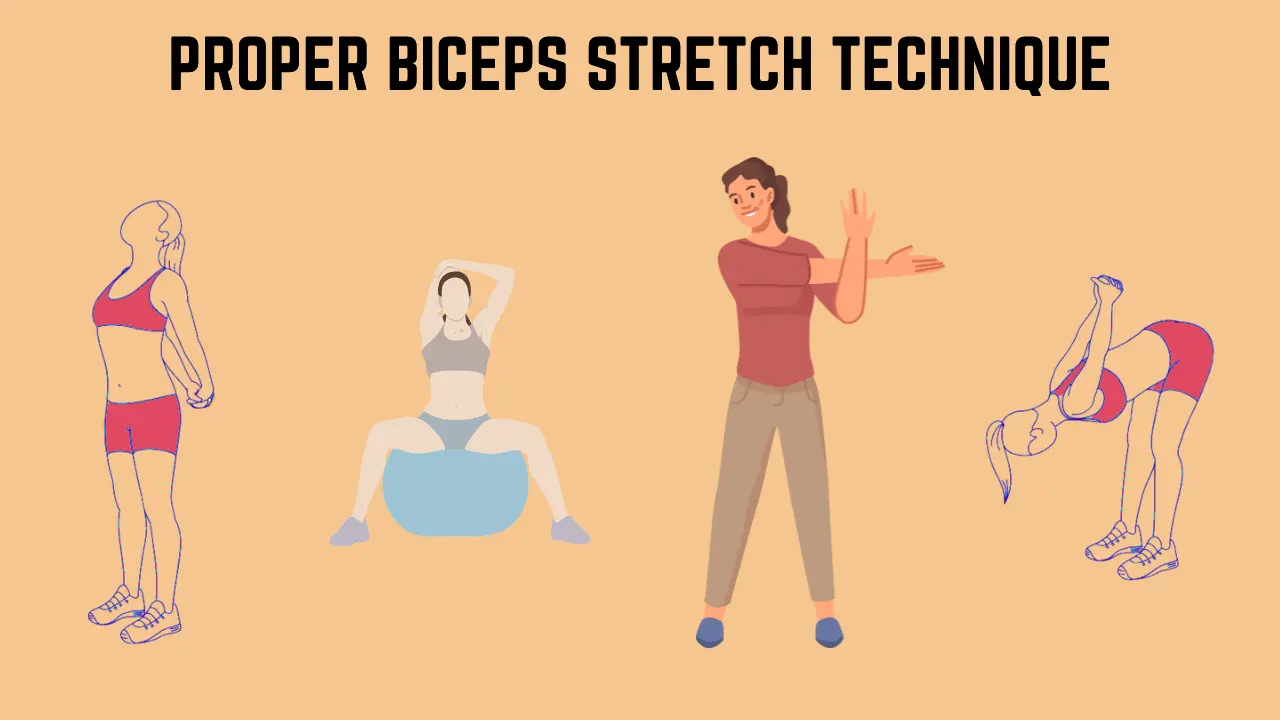
Stretching the biceps muscle itself is an effective way to relieve tension on the inflamed tendon. This gentle static stretch can be done daily.
How to do it:
- Stand with your injured arm extended down, palm facing forward.
- Use your uninjured hand to grasp the wrist of the injured arm.
- Slowly pull the wrist down and back until you feel a mild stretch along the front of your elbow/arm.
- Avoid pulling to the point of pain. A gentle stretch sensation should be felt.
- Hold for 30 seconds, relax, then repeat 5 times.
Precautions:
- Avoid over-stretching or forcing the stretch – move slowly only into mild discomfort.
- Hold stretches still without bouncing.
- Stop if you feel increasing elbow pain.
- Do not substitute stretching for rest during acute inflammation.
3. Sleeper Stretch
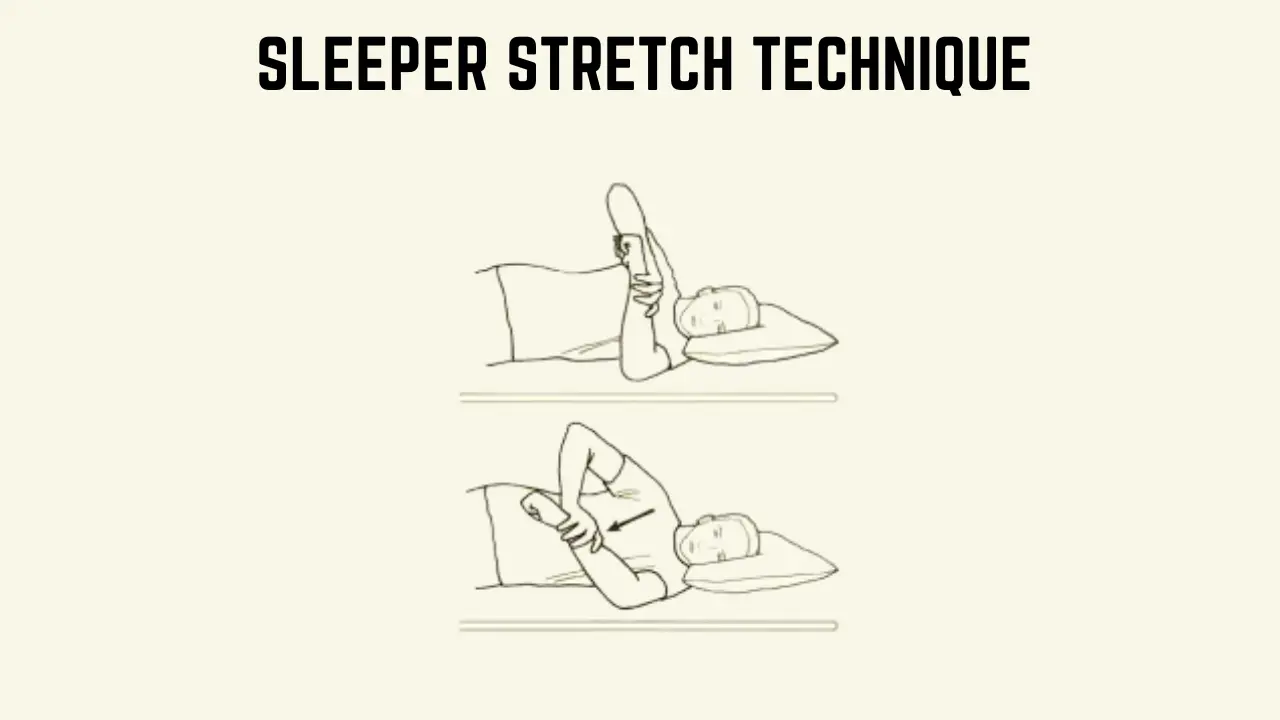
The sleeper stretch targets the shoulder capsule and muscles surrounding the biceps anchor near the shoulder joint. Opening up this area helps relieve compression on the biceps tendon.
How to do it:
- Lie on your side with the injured shoulder down and your arm bent 90 degrees. Bend your hips and knees slightly for comfort and support.
- Use your uninjured hand to grasp the elbow of your injured arm and gently pull the arm back towards your waist.
- You should feel a mild stretch on the front/outside of your shoulder.
- Hold 30 seconds, relax, and repeat 5 times. Then switch sides.
Precautions:
- Do not force or aggressively pull the arm – mild stretching sensation only.
- Stop immediately if this position causes elbow pain.
- Avoid if you have shoulder instability or dislocation issues.
- Keep head, neck and spine in alignment – no twisting.
4. Shoulder Flexion
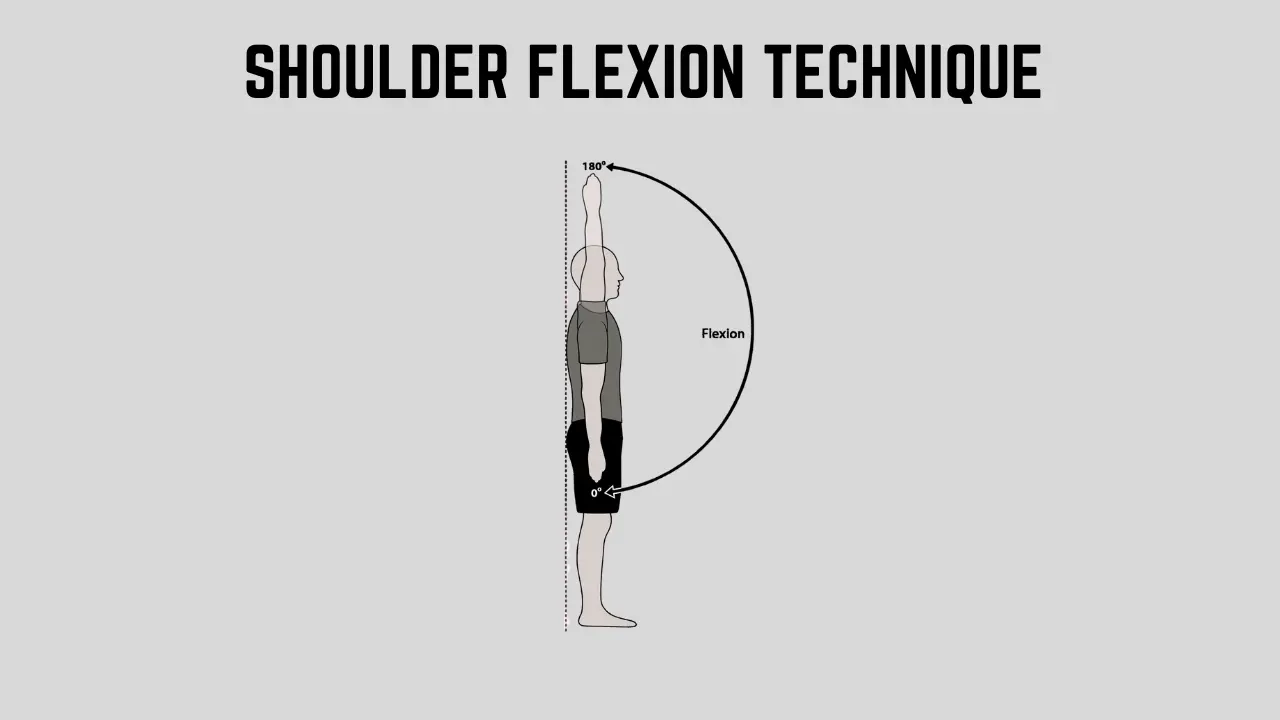
Moving the arm gently through an overhead flexion range of motion pattern can help maintain the mobility of the biceps tendon.
How to do it:
- Stand with a good upright posture. Raise your injured arm forward and upward over your head as far as is comfortable. Avoid hiking your shoulder up.
- Use your uninjured hand to lightly assist and guide the arm upwards if needed.
- Slowly lower back down.
- Repeat 10 times, 1-2 sets per session.
Precautions:
- Do not force a painful range of motion. Move only as far as is comfortable.
- Keep shoulders relaxed – no hiking upward.
- Stop if this exercise aggravates elbow pain.
- Avoid overhead lifting during recovery.
5. Internal Rotation Stretch
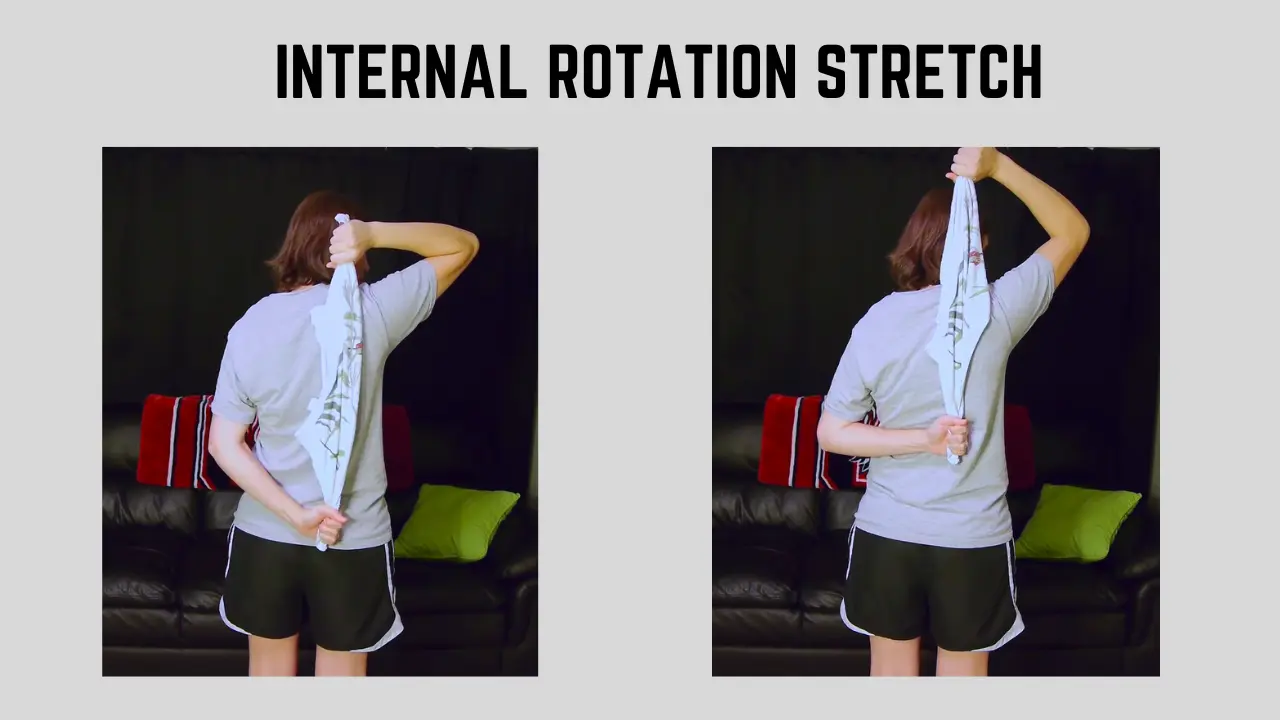
Stretching the back of the shoulder can help open up the front chest and shoulder area to relieve compressive forces on the biceps tendon.
How to do it:
- Stand upright and clasp your hands behind your back.
- Gently pull your shoulders back, raising the elbows towards the ceiling until you feel a mild stretch in the back of the shoulders. Keep knees soft.
- Hold for 30 seconds, relax, and repeat 5 times.
Precautions:
- No pain should be felt in the elbow. Discontinue if symptomatic.
- Keep neck relaxed and chin tucked – don’t hyperextend.
- Avoid over-arching lower back. Maintain neutral spine alignment.
6. External Rotation Stretch
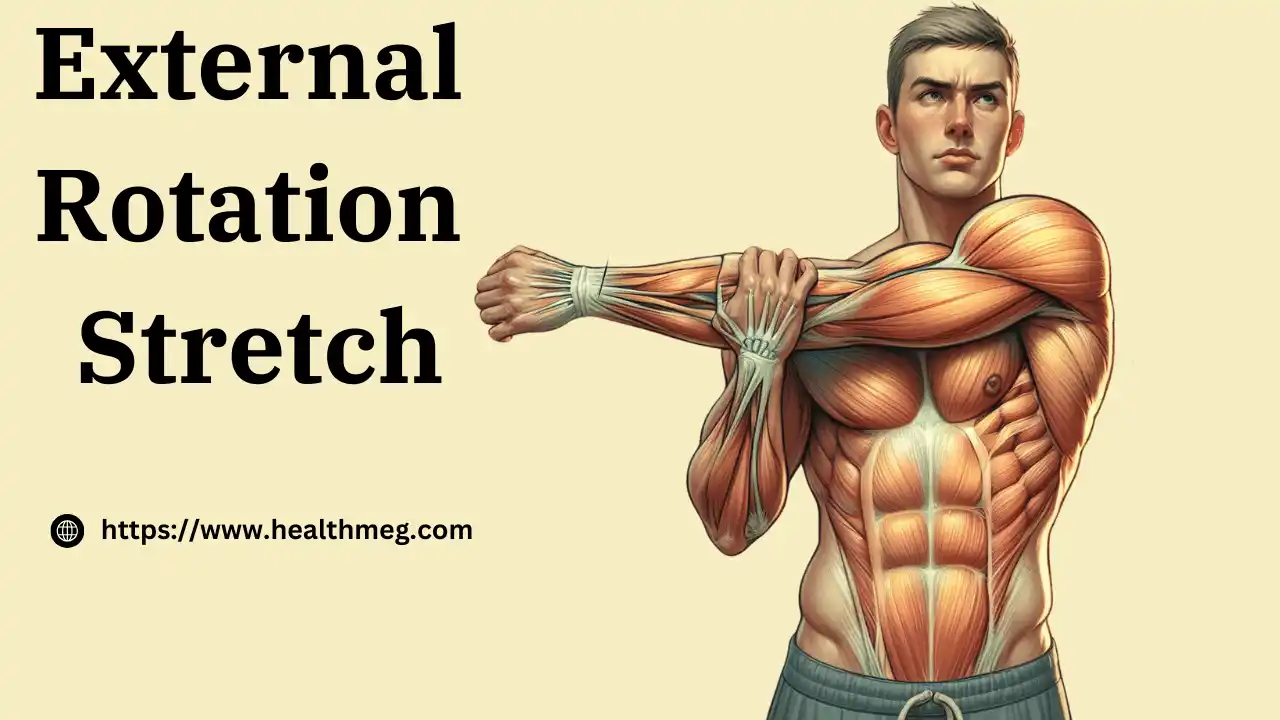
This stretch opens up the anterior shoulder capsule and chest muscles.
How to do it:
- Stand upright with your injured arm fixed at your side, elbow bent 90 degrees.
- Keeping your elbow close to your body, gently rotate your arm outward, taking your hand away from your body.
- You should feel a mild stretch in the front of your shoulder.
- Hold for 30 seconds, return to start, and repeat 5 times.
Precautions:
- Only go to the point of mild stretch – no pain.
- Do not force the range of motion.
- Keep torso still – no leaning or twisting.
7. Forearm Supination and Pronation
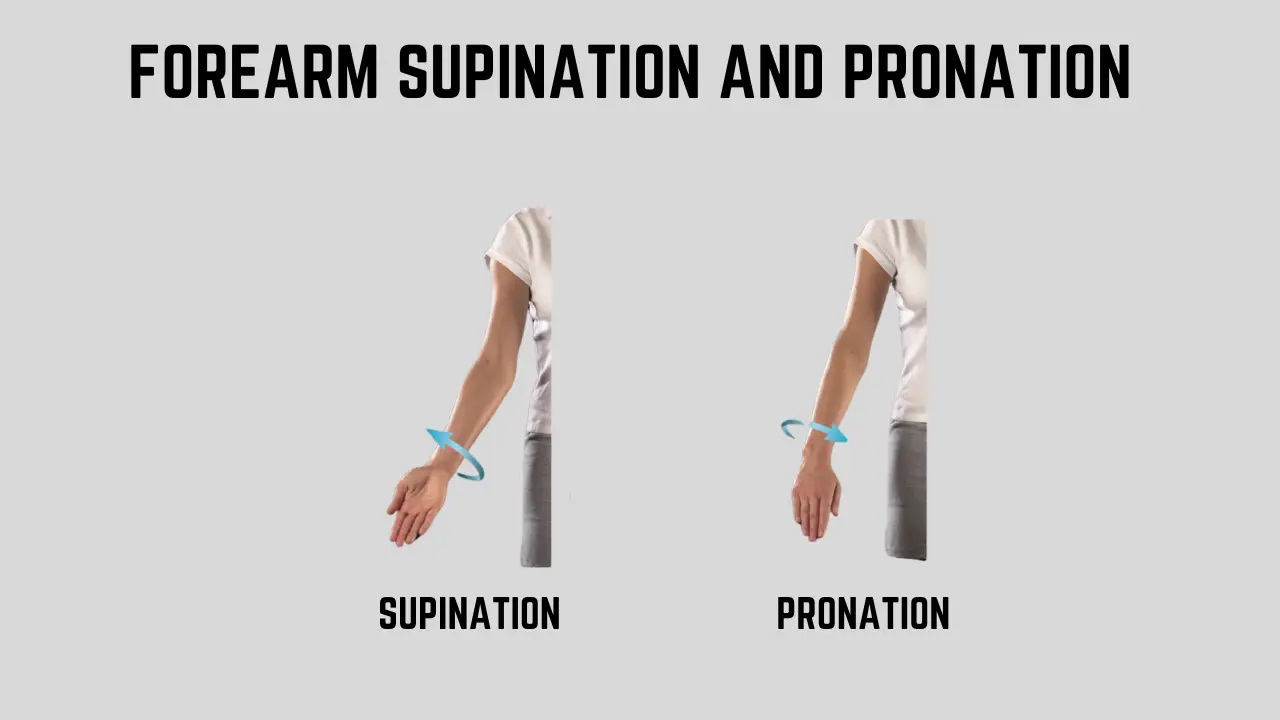
Gently moving the forearm through full supination (palm up) and pronation (palm down) range of motion ensures the biceps muscle-tendon unit moves smoothly through these motions.
How to do it:
- Stand or sit upright with your injured elbow bent 90 degrees at your side, palm facing in.
- Slowly turn your palm up towards the ceiling, then reverse back down towards the floor.
- Complete 10 reps. Do 2-3 sets per session.
Precautions:
- Use controlled motions – no jerking of the wrist.
- Discontinue if this exercise causes elbow pain.
- Avoid repetitive forearm motions or heavy wrist loading.
Proper precautions should be taken with each biceps tendonitis exercise to avoid overstressing the healing tendon. Progress slowly and carefully for optimal recovery. Consulting a physical therapist can help determine the right exercises and intensities tailored to your specific situation and recovery stage.
Biceps Tendonitis Exercises to Avoid
While controlled movements can aid recovery, certain exercises can worsen biceps tendonitis by overloading the inflamed tendon. Activities demanding heavy shoulder and elbow exertion should be avoided until cleared by your doctor or physical therapist.
Problematic exercises include:
- Carrying heavy bags of groceries or other objects
- Lifting heavy weight overhead or straight out in front of you
- Pulling motions like starting a lawnmower or weed whacker
- Forceful pushing and pulling when vacuuming, mopping floors or making beds
- Lifting heavy buckets or containers
- Repetitive forearm and wrist motions like using a screwdriver
Exercise Frequency for Biceps Tendonitis
When beginning a biceps exercise program, focus on:
- Gentle range of motion exercises for 5-10 minutes, 3 times per day
- Light biceps stretches holding 30 seconds, 5 reps, 2-3 times per day
- Low-resistance strengthening like isometrics for 10 reps, 2-3 sets per day
As pain decreases over 1-2 weeks, you can increase strengthening exercises to:
- 2-3 sets of 10-15 reps
- 3x a week, with a day of rest between sessions
- Adding 1-2 lb to dumbbells every 2-3 weeks if pain-free
Adequate rest between exercise days and avoidance of overtraining is crucial to avoid tendon irritation and regression. Consistency is key. Frequent short sessions are most effective for long-term tendon health gains.
Expected Biceps Tendonitis Recovery Timeline
Recovery time depends on factors like age, activity levels, and severity, but here are general timeframes:
- Week 1: Rest, ice, over-the-counter anti-inflammatories
- Weeks 2-4: Gentle range of motion and light stretching exercises
- Weeks 4-8: Progress to light resistance exercises if tolerated
- 2-3 months: Gradual return to normal sports and activities if pain-free
With proper rest and rehab, mild to moderate biceps tendonitis often resolves within 8-12 weeks. More severe cases can take 3-6 months for full recovery. Patience is essential, as pushing too quickly often prolongs healing.
When to Seek Professional Rehab
If home exercises aren’t providing relief after 4-6 weeks, see a physical therapist for customized rehabilitation. A PT can assess your condition, progress exercises appropriately, and utilize modalities like ultrasound or TENS to accelerate healing.
Your doctor may also recommend advanced treatments like:
- Platelet-rich plasma (PRP) injections: Injecting your own concentrated platelets into the damaged tendon prompts repair.
- Tenex procedure: This ultrasound-guided minimally invasive procedure gently breaks up scar tissue.
- Orthobiologics: Substances like stem cells or growth factors are injected to stimulate healing.
- Shock wave therapy: Pulses of high-energy sound waves target the injured area to boost blood flow.
For recalcitrant cases, surgery like biceps tenodesis may be warranted to decompress the tendon if conservative methods fail.
Prevention Tips for Biceps Tendonitis
You can help prevent biceps tendonitis flare-ups with:
- Regular exercise: Keeping your shoulder and elbow muscles conditioned reduces strain on the biceps tendon.
- Proper lifting form: Use your legs and keep your back straight, arms close to your body, and elbows tucked in when lifting. Hold objects close to your body to minimize leverage strain.
- Take breaks: Avoid repetitive arm tasks for prolonged periods. Take frequent breaks to rest your arm.
- Warm up: Warm muscles are less prone to injury, so warm up with stretches before activities.
- Use proper equipment: An improperly strung tennis racquet or golf club forces your arms and shoulders to overwork. Seek professional fit guidance.
- Manage your weight: Excess weight taxes joints and tendons. Maintain a healthy weight to reduce injury risk.
- Mind your posture: Slumped posture causes shoulders to roll forward, straining the biceps anchor. Keep shoulders back.
Conclusion
While frustrating, biceps tendonitis can be successfully managed and overcome through education, targeted biceps exercises, rest, and patience. Consult a doctor to ensure proper diagnosis and rule out conditions requiring prompt treatment, like a tendon tear.
Work closely with your healthcare providers to progress your exercise routine appropriately based on your individual recovery pace and pain responses. With consistency and proper precautions, targeted biceps exercises can aid comfort, and function, and get you back to all the activities you enjoy pain-free!
People Also Asks (FAQs)
Q) What is the fastest way to heal bicep tendonitis?
A) The fastest way to heal bicep tendonitis is to follow RICE therapy:
- Rest – Avoid activities that aggravate your symptoms. Take a break from any exercises that cause pain.
- Ice – Ice the area for 15-20 minutes several times per day, especially after activity. Icing reduces inflammation and pain.
- Compression – Wearing an elbow sleeve just below your sore elbow can help decrease swelling.
- Elevation – Keep your elbow raised above heart level as much as possible to minimize swelling.
Also, over-the-counter anti-inflammatory medication like ibuprofen can help ease pain and speed healing. See your doctor promptly if your symptoms worsen or do not improve within 2 weeks.
Q) What is the best exercise for bicep tendonitis?
A) The best bicep tendonitis exercises early on focus on gentle stretching and range of motion. Examples include:
- Shoulder flexion stretches
- Forearm supination/pronation rotations
- Wrist flexion/extension
- Elbow flexion/extension
- Assisted bicep stretches
Avoid lifting weights or strenuous activity involving the injured arm until pain resolves. Then gradually progress to light strengthening like bicep curls with low weight.
Q) Can I still work out with bicep tendonitis?
A) You can still exercise with bicep tendonitis, but you’ll need to modify your routine to avoid overusing your injured arm. Focus on lower-body workouts, core exercises, cardio equipment that doesn’t involve your arms, and light upper-body exercises that don’t cause bicep pain. Avoid heavy-weight training on your injured arm initially.
Q) Does bicep tendonitis ever go away?
A) Yes, with proper rest, targeted exercises, anti-inflammatory medication, and time, bicep tendonitis often resolves fully. Acute flare-ups can heal within a few weeks to months. More chronic cases may take up to 6 months to heal. Tendonitis that persists for over 6 months may require more advanced treatment.
Q) Is it good to massage bicep tendonitis?
A) Gentle massage around (but not directly on) the tender bicep tendon can help improve blood flow and reduce muscle tightness. Use light pressure and massage above and below the affected area. Deep tissue massage directly over the inflamed tendon should be avoided as it may aggravate symptoms. Consult your doctor or physical therapist prior to self-massage.



